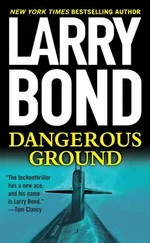“I think the Navy would want me to be there,” Patterson answered matter-of-factly.
Richardson started walking again, maybe a little faster than before, and thinking faster still. He was due to brief the National Security Council in less than an hour about the Seawolf crisis. He’d been invited as the navy’s senior submarine representative, since the director and deputy director were both on travel. He’d reviewed Seawolf’s mission, what they knew of her damage, and what the Navy’s options were for dealing with the crisis.
His audience would include the President’s National Security Adviser, the Chairman of the Joint Chiefs of Staff, the Chief of Naval Operations, the Director of National Intelligence, and half a dozen other luminaries. He would brief them on the situation and answer questions about submarines in general and Seawolf in particular.
There were two other briefs after his, one about the Russians and one about the weather. When they were over, the assembled national-level decision-makers would list possible options and recommend one or more to the President of the United States. This was the real deal.
His intention was to give a good brief, answer their questions to the best of his ability, and otherwise keep the hell out of the way. Richardson was a full Navy captain, a “four-striper.” He’d commanded two nuke subs, one a boomer, but these people operated at a much higher level.
Dr. Joanna Patterson was angling for an invite. Could she bring anything useful to the party? She was President Huber’s science and technology advisor for intelligence, which meant she looked at intelligence from a scientific viewpoint and told President Huber what she thought. It said a lot about Huber’s opinion of her.
* * *
Joanna Patterson watched Bill Richardson consider her request, and she knew that’s all it was, a request. One simply did not show up at an NSC meeting because one had something useful to say. One was invited.
And she needed to be invited. Ever since her patrol aboard Memphis, she’d become friends with many submariners. She’d socialized with them, gone to special events, learned about submarine technology. She’d even married a submariner.
Along with her husband, she’d gone to the change of command ceremony in New London when Tom Rudel had become Seawolf’s captain. Her husband Lowell and Tom had served together, and Jerry Mitchell was aboard Seawolf as well. Once one of her contacts had called to tell her about Seawolf, she’d dropped everything else.
Everyone at the NSC meeting would want to resolve the crisis, but state, defense, intelligence, even the navy had their own goals. Her only agenda was the crew of USS Seawolf. She knew Washington, and what was politely called “politics.” She had helped President Huber and had his ear. And she would use every trick she knew to make sure the men in that room moved heaven and earth to bring Seawolf home.
* * *
Richardson also knew she’d been a powerful friend to the Navy, and submarines in particular. Word in the Pentagon was that she’d been involved in several technology programs, basically grading other agencies’ homework for the president. She also had a Bluenose certificate in her office, framed in a place of honor. She refused to say where or how she got it.
He’d first met her at a Submarine League gathering, along with her husband, a retired submariner and now a congressman. She had a sharp mind and did not suffer fools at all. Both had political connections, but hers were wider and higher. Much, much, higher.
Three steps after Patterson’s request, Richardson answered, “Doctor, I’d be delighted if you’d join me. I can add you to our list as a ‘submarine technology subject-matter expert.’”
“That’s accurate enough for our purposes. They have all my information over there on file.”
They’d reached the car, and as soon they were moving Richardson called and made the arrangements. It was a twenty-minute ride to the White House, and risking rudeness, Richardson took the time to review the hard copy of what he hoped were error-free slides.
* * *
Patterson busied herself with her BlackBerry. Her first email was to Lowell, of course, and then a general call to several submariner friends. There was no way she’d get answers in time for the meeting, but she needed input, ideas, wisdom.
Lowell, bless his heart, did answer her note with a two-word text reply: be gentle.
* * *
The meeting was actually being held in the basement of the Old Executive Office Building, across the street from the White House. Richardson and Patterson passed through the security screenings at the main entrance, again on the basement level when they came off the elevator, and one last time when they reached the secure area. Richardson gave up his cell phone and laptop, while Patterson gave up her BlackBerry, a second cell phone, iPod, and digital camera.
Patterson knew the names and faces of all the cabinet-level officials. She was a little surprised when she didn’t see any of them here. While Richardson set up his presentation, she worked the room.
The secretary of state was missing. Instead, a stocky forty-something introduced himself as the Assistant Secretary of State for European affairs. “The Secretary hopes this can be dealt with quickly, without involving the cabinet.” His name was Abrams.
He’d brought along another assistant secretary, a carefully groomed woman named Parker, in charge of public affairs. She looked ready to step in front of a TV camera, but Patterson thought she had too much makeup on for a meeting. “Getting our message out properly is key to resolving this crisis,” she declared.
“I would think successfully rescuing the Russian submariners and getting our people home would be a better goal,” Patterson observed.
The Joint Chiefs had sent the vice chairman, a four-star Air Force general, with a Navy four-star admiral at his elbow. Patterson actually knew the admiral, the vice chief of naval operations, named Sotera. He was an aviator, not that she had anything against pilots.
Intelligence had sent a senior executive service-level political-military expert along with a junior Russian Navy specialist, while Defense was represented by their senior counsel, a silver-haired man in an untidy suit. She hadn’t expected the Vice President, the official head of the NSC, to be here, but even the National Security Adviser, who chaired in the VP’s absence, was also missing.
Instead, a middle-aged woman, looking tired and a little impatient, called the meeting to order at precisely eleven thirty. “My name is Adrienne Gosport, I’m the deputy to National Security Adviser Wright.” Gosport looked over at a secretary to make sure she was recording the proceedings. “We are convening to discuss the incident involving USS Seawolf, to assess the situation and determine if any action needs to be taken at the national level.” She glanced at her notes. “Captain Richardson has prepared a brief of the situation.”
The captain walked them through the background: Russian exercises, Seawolf’s mission, then what Rudel had reported of the encounter, Seawolf’s material condition, and Rudel’s intentions. Richardson was good. He kept it short, stuck to the slides, and then sat down.
Gosport saw members start to ask questions, but cut them off. “Let’s hold our questions until the other briefs are finished. Let’s have the weather next.”
An Air Force staff sergeant, remarkably at ease in the presence of such high rank, didn’t mince words. “This area has some of the worst weather in the world. Vicious storms like the one near Svalbard are not uncommon this time of year, but it is not the norm. Units on the surface will experience heavy seas, winds of gale force, and visibility of less than a quarter mile. I’ve passed around printouts with the exact details, but the simple answer is that in the area of interest, conditions have worsened since yesterday and are expected to peak tomorrow.
Читать дальше












